
Nutrition for winter cycling: how to fuel off-season miles
Fueling Those Winter Miles The days are getting shorter and the temps continue to dive down. Winter will officially start in a week but it
Honoring the Legacy of the Worlds Fastest man – By Kate Agathon
By Kate Agathon
America’s first Black superstar athlete was a cyclist.
Before Jack Johnson, Joe Louis, Jackie Robinson, and Jesse Owens, there was Marshall Walter “Major” Taylor.
Between 1896 and 1910, Taylor was the fastest cyclist in the world. Even by modern standards, he is considered to be one of the greatest American sprinters of all time.
Throughout his career, he set several world records, culminating with becoming the first Black American to achieve the title of world champion and the second Black athlete (the first was Canadian boxer George Dixon in 1890) to win a world championship in any sport when he won the 1-mile sprint at the 1899 ICA Track Cycling World Championships.
Over the years, his success on the track continued.
In 1900, Taylor followed his world championship win with a national cycling championship. This is notable because he had been denied entry to key competitions in previous years.
1901 was a remarkable year, in which Taylor defeated every European champion who challenged him.
One of the highest paid athletes of his time (Black or White), he raced all around the world (including across three continents) until his retirement in 1910 at the age of 32 years.
I spoke with Michael Kranish, Washington Post investigative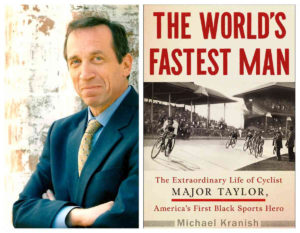 journalist and author of The World’s Fastest Man: The Extraordinary Life of Cyclist Major Taylor to learn more about the incredible life of Taylor.
journalist and author of The World’s Fastest Man: The Extraordinary Life of Cyclist Major Taylor to learn more about the incredible life of Taylor.
“Cycling was the nation’s most popular sport in the late 1890s and early 1900s during Taylor’s heyday. It was common for 10,000 or more people to attend races in velodromes,” explained Kranish.
“The popularity of the sport and Taylor’s repeated success as a champion made him one of the most chronicled Black persons of his time. He raced throughout Europe and twice in Australia, and many stories appeared about him in publications around the world,” he continued.
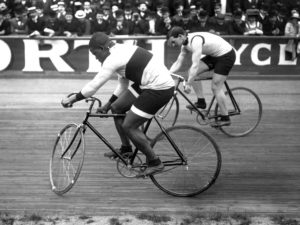
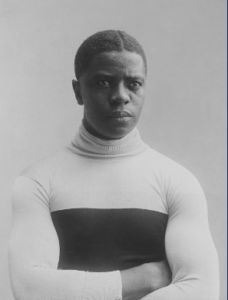 Kranish first heard the story of Major Taylor when he was writing for the Boston Globe.
Kranish first heard the story of Major Taylor when he was writing for the Boston Globe.
Taylor had lived most of his life in Worcester, Mass., and Kranish learned that his then-96-year-old daughter, Sydney, was still living.
So, he went to visit her as well as Taylor’s great-grandaughter, read everything he could, and pitched the idea of a story to the Globe’s Sunday magazine.
Kranish’s story landed on the cover.
Off and on over the next 20 years, what began as a magazine story morphed into a book, as Kranish diligently collected information, and read thousands of stories from newly-digitized sources from around the world.
Around 2018, he collected his material, secured a contract for a book, and focused on its completion.
Champion of the World
When Major Taylor Mania reached fever pitch in the early 1900s, he was a global superstar in one of the world’s most popular sports. In fact, the Sydney Morning Herald declared him “Champion of the World” in 1903.
While he took down Europe’s top riders one by one in Europe’s most famous velodromes, Taylor’s fame continued to grow. With each win and racing record broken, the money and adulation poured in.
As his star continued its meteoric rise, the crowds followed, and so did the memorabilia. Fans sported Major Taylor buttons, exchanged Major Taylor trading cards, cooled themselves with accordion fans that bore his likeness, etc.
Everywhere he went, attendance records were shattered.
Whether he was at a train station, or competing in an event, Taylor was a celebrity and thousands thronged to see him. Even working out, Taylor attracted large audiences of admirers.
Taylor was particularly adored in Australia, where hundreds of boats carrying enthusiastic fans greeted him, and Major Taylor Carnival trains were wildly popular.
So great was Taylor’s fondness of Australia, he and his wife, Daisy, decided to name their only daughter Sydney.
Abroad, he was much feted. However, back home in the United States where racial segregation was still practiced and enforced, he faced daily racism and endured threats and acts of violence.
Despite his international fame, Taylor was banned from practicing on tracks, denied membership to organizations and entries into races, and was refused entrance to hotels and restaurants.
Even while competing, he was subjected to racial slurs from spectators who were not above throwing objects at him (including dumping ice water on him and scattering nails in front of his wheels).
The violence he endured from fellow cyclists was also heinous.
He was often either elbowed or shoved (including head first into track rails). Rivals teamed up to sabotage him. In New England, he was once nearly choked to death by W. E. Becker, a Bostonian cyclist who threw Taylor from his bike and proceeded to choke him nearly to death in front of thousands of spectators.
“The most surprising thing was that time and again he faced terrible racism and yet rose to become national and world champion,” remarked Kranish.
“At one point, his trainer tried to bleach him to make him look lighter skinned, but the process was painful and pointless, and Taylor decided that he would never again try it – he said that he would make his race his fortune, and become a champion to represent Blacks and anyone who faced racism,” he continued.
Enduring Legacy
According to Kranish, Taylor was never recorded on audio or video, and he initially was not as anxious to be outspoken.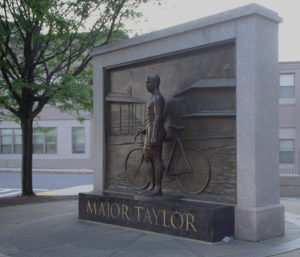
“Eventually he decided that he had that obligation, and he wrote his autobiography in hopes that people would learn more about his story and the challenges that he and others faced due to racism. He did not want his story to be forgotten, and I hope I’ve played some role in keeping it alive,” said Kranish.
Unfortunately, Taylor’s post-professional cycling years were characterized by misfortune.
In the two decades that followed his retirement, Taylor’s marriage had failed, and he had lost his fortune in bad investments, unsuccessful business ventures, and the stock market crash.
He spent his final years in poverty and was buried in an unmarked pauper’s grave when he died in 1932 at age 53.
“I hope he’s not as forgotten as he once was. In 1948, a group of cyclists arranged for him to be taken from a pauper’s grave to bury him properly with a monument noting his place in history. Since then, there have been many Major Taylor clubs around the country, trails named after him, and several books, including mine,” said Kranish.
Taylor’s legacy has endured.
Among his numerous posthumous recognitions are the 1982 opening of the Major Taylor Velodrome in Indianapolis, induction into the U.S. Bicycling Hall of Fame in 1989, the USA Cycling Korbel Lifetime Achievement Award in 1996, and being one of nine track cyclists to be inducted into the UCI Hall of Fame in 2002.
In Illinois, the Major Taylor Initiative is currently underway in the hopes of honoring him with a postage stamp and a Congressional Medal of Honor. The group has already begun a fundraiser for a monument to be placed at the entrance of his namesake trail on Chicago’s South Side.
The month of February is designated as Black History Month. Kranish’s biography on cycling legend Major Taylor offers an unvarnished look at the past.
“Many people who read the book said things were even worse than they thought. History is an essential teaching for us to understand our past and navigate the present,” said Kranish.
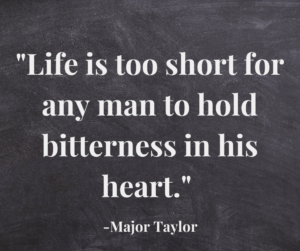 “I learned many things not just about Taylor but also the times in which he lived, and I tried to present nuggets of history lessons on nearly every page, so it’s not just about the racing history, but a history of the time in which Americans then lived,” he finished.
“I learned many things not just about Taylor but also the times in which he lived, and I tried to present nuggets of history lessons on nearly every page, so it’s not just about the racing history, but a history of the time in which Americans then lived,” he finished.
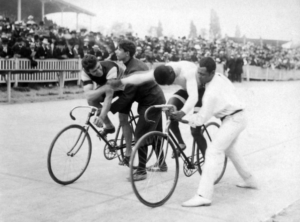

Fueling Those Winter Miles The days are getting shorter and the temps continue to dive down. Winter will officially start in a week but it

By Kris Thompson, Contributor-AvidCyclist Do you have bucket rides/events you want to do in your life? Bucket rides/events can motivate you into training for the

When it comes to fueling for a big Fondo or Charity Ride, we can take a lot of advice from the professional peloton. Just because

11 years ago, the great folks at Adventure Fit Events set out to create a way for our community to rally together during the winter
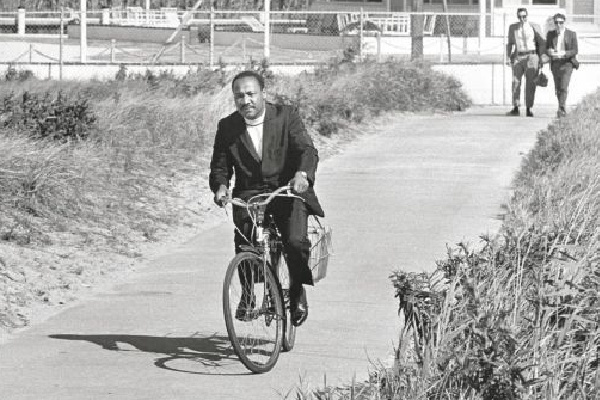
By: Gary Robinson, Editor This coming April 4th will mark 56 years since the assassination, by a racist, of the man whose life we remember

by: Gary Robinson If you are cyclist here in Colorado, there are a lot of things you see that make you shake your head, and